10 FAQs About Zebra Tarantulas
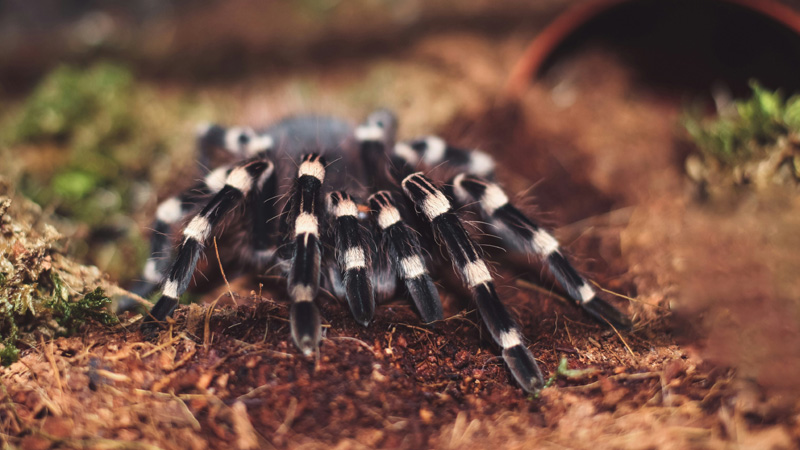
Photo by Hubert Solczynski on Unsplash
Zebra tarantulas, also known as the striped-knee tarantula, is a captivating species of tarantula that has gained popularity among exotic pet enthusiasts. These tarantulas are known for their striking black and white striped patterns, making them visually appealing. Zebra tarantulas are generally docile and easy to care for, making them a favorite among tarantula keepers.
To help shed light on these exotic creatures and answer some common questions, here are 10 FAQs about zebra tarantulas:
- 1. What are Zebra Tarantulas?
- 2. What is the Size and Lifespan of Zebra Tarantulas?
- 3. Are Zebra Tarantulas Aggressive?
- 4. Are Costa Rican Zebra Tarantulas Good for Beginners?
- 5. What do Zebra Tarantulas Eat?
- 6. How Often Should Zebra Tarantulas Be Fed?
- 7. How Often do Zebra Tarantulas Molt and What is the Process Like?
- 8. How Should I Set up the Enclosure for a Zebra Tarantula?
- 9. Can Zebra Tarantulas be Handled or Are They Strictly for Observation?
- 10. What are some Common Health Issues or Concerns with Zebra Tarantulas?
1. What are Zebra Tarantulas?
Aphonopelma seemanni, commonly known as the Costa Rican zebra tarantula or striped-knee tarantula, is a fascinating species of tarantula known for its distinctive appearance. These tarantulas have a black body with distinct white stripes, resembling the patterns of a zebra, which gives them their common name. The contrast between the black and white coloration makes them visually striking and easily recognizable.
These tarantulas are found primarily in Western Costa Rica, as well as other parts of Central America, including Honduras, Nicaragua, and possibly Guatemala. In their natural habitat, the Costa Rican zebra tarantulas prefer open, semi-arid scrublands. They are deep-burrowing spiders that construct burrows for protection and temperature regulation. The burrows help them regulate their body temperature by keeping it below the highest daytime temperatures and retaining humidity. The burrows also act as a buffer, protecting the spiders from the lowest temperatures at night.
2. What is the Size and Lifespan of Zebra Tarantulas?
These tarantulas have a leg span of approximately 4 to 5 inches when fully grown, which is equivalent to around 10 to 13 centimeters.
In terms of lifespan, female Costa Rican zebra tarantulas are known to be relatively long-lived. They can live up to 15 to 20 years in captivity, provided they are given proper care and suitable living conditions. On the other hand, male zebra tarantulas have a shorter lifespan, typically ranging from 5 to 7 years.
It's important to note that these lifespan estimates can vary depending on various factors, including the tarantula's overall health, diet, and environment.
3. Are Zebra Tarantulas Aggressive?
Zebra tarantulas, like most tarantulas, do possess venom but it is not considered medically significant to humans. While a bite may cause mild irritation or discomfort, these tarantulas are generally docile and not considered dangerous. However, caution should still be exercised when handling them.
When feeling threatened, zebra tarantulas have the ability to flick urticating hairs off their abdomens. These tiny, barbed hairs can cause pain and irritation if they come into contact with a predator's skin or eyes. It's important to respect the natural behaviors and defense mechanisms of these tarantulas to ensure both their well-being and your safety when interacting with them.
4. Are Costa Rican Zebra Tarantulas Good for Beginners?
Zebra tarantulas are often considered suitable pets for beginners interested in keeping tarantulas. Here's a summary of the characteristics that make them attractive choices for novice tarantula keepers:
Docile Nature: Zebra tarantulas are generally known for their docile nature, which means they are typically more relaxed and less likely to exhibit aggressive behaviors. This can make them easier to handle and work with, especially for those who are new to tarantula care.
Low Maintenance Requirements: Zebra tarantulas have relatively low maintenance requirements compared to some other species of tarantulas. They can be housed in enclosures of appropriate size with suitable substrate, hiding spots, and minimal additional maintenance needs.
If you're considering getting a zebra tarantula or any other pet, it's important to do your research and consult with experts or experienced tarantula keepers to ensure the best care for your pet.
5. What do Zebra Tarantulas Eat?
In their natural habitat, zebra tarantulas are opportunistic hunters and feed on a variety of prey, including insects, small arthropods, and occasionally small vertebrates. This diverse diet helps ensure they receive the necessary nutrients for their growth and overall health.
In a captive setting, zebra tarantulas can be fed a diet consisting of appropriately sized live insects. Common live prey options include crickets, roaches, and mealworms, which can be readily obtained from pet stores or specialized suppliers. It is important to ensure that the size of the prey is no larger than the tarantula's body to prevent any potential injuries during feeding.
6. How Often Should Zebra Tarantulas Be Fed?
Zebra tarantulas typically have a moderate appetite and can be fed 2-3 times per week. The frequency of feeding can vary based on the size and activity level of the tarantula. It's essential to observe your tarantula's feeding behavior and adjust the feeding schedule accordingly to ensure they are getting adequate nutrition without overfeeding.
It's crucial not to overfeed zebra tarantulas as obesity can lead to various health problems, including stress on their internal organs and reduced mobility. Maintaining a balanced feeding schedule and portion control is essential for their overall well-being.
7. How Often do Zebra Tarantulas Molt and What is the Process Like?
Zebra tarantulas, like other tarantulas, molt multiple times throughout their lives. The frequency of molting can vary depending on factors such as the age and growth rate of the tarantula. As they mature from hatching to adulthood, they typically undergo several molting cycles to shed and replace their exoskeleton.
Before molting, tarantulas often exhibit certain behavioral and physical changes. They may become less active, reduce their appetite, and seek out a safe, secluded spot in their enclosure. This is a normal part of the molting process, and it's important to provide them with a stress-free environment during this time.
Once the tarantula has completed the molting process and its new exoskeleton has hardened, it will resume its normal activity and feeding patterns.
8. How Should I Set up the Enclosure for a Zebra Tarantula?
Provide a substrate that allows for burrowing and mimics their natural habitat. Suitable substrates for zebra tarantulas include a mix of peat moss, coconut fiber, or vermiculite. Additionally, ensure there are hiding places such as cork bark, half logs, or artificial plants where the tarantula can retreat for security and privacy.
Include a shallow water dish in the enclosure for the tarantula to drink from and maintain adequate humidity levels. It's essential to keep the water dish clean and filled with fresh water to ensure hydration for the tarantula.
Monitor and regulate the temperature and humidity levels in the tarantula's enclosure to create a comfortable environment. Zebra tarantulas thrive in temperatures ranging from 75-85°F (24-29°C) with a humidity level of around 70-80%. Using a thermometer and a hygrometer can help ensure the conditions are within the appropriate range.
Proper ventilation is important to prevent stagnant air and maintain air circulation within the enclosure. Make sure the enclosure has adequate ventilation holes or vents to promote airflow. Additionally, ensure the enclosure has secure locks or closures to prevent escapes and ensure the tarantula's safety.
9. Can Zebra Tarantulas be Handled or Are They Strictly for Observation?
Tarantulas have a delicate physiology, and handling can cause them stress and anxiety. They may perceive handling as a threat, leading to defensive behavior that can include biting or flicking urticating hairs. Minimizing handling helps maintain their well-being and reduces the risk of harm to both the tarantula and the handler.
Remember, each tarantula has its own personality and disposition, and while some individuals may be more tolerant of handling, it's generally best to err on the side of caution and avoid unnecessary handling altogether.
10. What are some Common Health Issues or Concerns with Zebra Tarantulas?
Zebra tarantulas require a certain level of humidity to thrive. If the humidity levels are too low, it can result in difficulties during molting and can lead to issues like failed molts or complications with the tarantula's exoskeleton.
Maintaining appropriate temperatures is essential for the well-being of zebra tarantulas. Extreme temperatures that are too high or too low can be detrimental to their health. Extreme heat can cause dehydration and stress, while cold temperatures can result in sluggishness and poor digestion.
Providing a balanced and varied diet is important for the well-being of zebra tarantulas. Their diet typically consists of a variety of appropriately sized insects such as crickets, roaches, and mealworms. A lack of proper nutrition can lead to malnourishment and other health issues.
If you observe any unusual behavior or signs of illness such as loss of appetite, lethargy, or abnormal webbing patterns, it is advisable to consult with a veterinarian experienced in exotic pet care. They can provide guidance and recommend appropriate measures to address any potential health concerns.
Conclusion
In conclusion, zebra tarantulas are intriguing creatures that captivate enthusiasts with their striking appearance and unique behaviors. While they may seem intimidating to some, they make fascinating pets for those willing to provide them with the proper care and respect they deserve.
You May Also Like
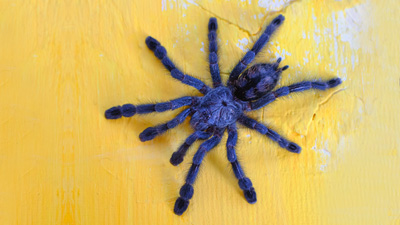 Other PetsAre Cobalt Blue Tarantulas Suitable for Beginners?
Other PetsAre Cobalt Blue Tarantulas Suitable for Beginners?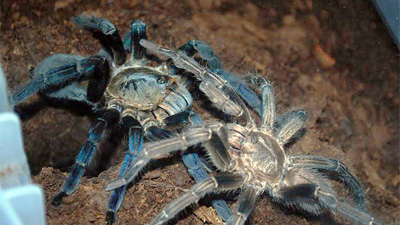 Other PetsThe Price of Cobalt Blue Tarantula in the US ($50 to $200)
Other PetsThe Price of Cobalt Blue Tarantula in the US ($50 to $200)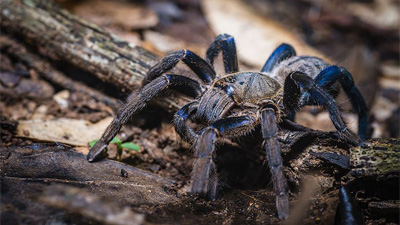 Other PetsWhat Happens if a Cobalt Blue Tarantula Bites You?
Other PetsWhat Happens if a Cobalt Blue Tarantula Bites You?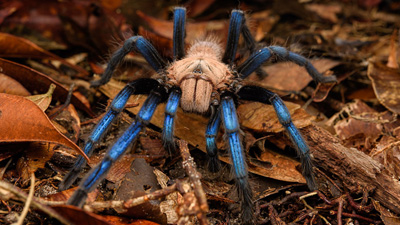 Other Pets10 FAQs About Cobalt Blue Tarantulas
Other Pets10 FAQs About Cobalt Blue Tarantulas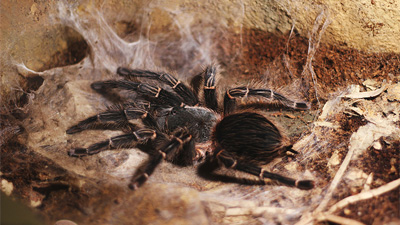 Other PetsWhat Happens if a Pink Toe Tarantula Bites You?
Other PetsWhat Happens if a Pink Toe Tarantula Bites You?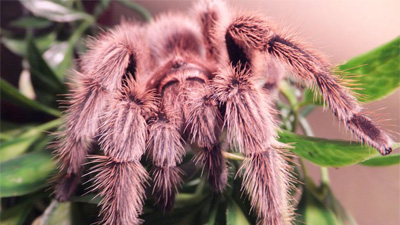 Other PetsWhat Happens if a Rose Hair Tarantula Bites You?
Other PetsWhat Happens if a Rose Hair Tarantula Bites You?